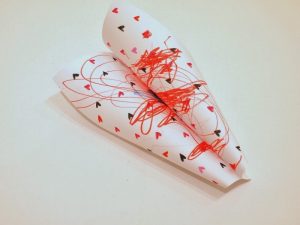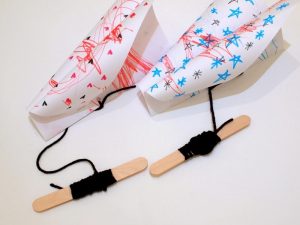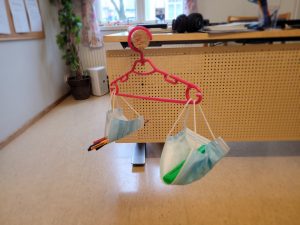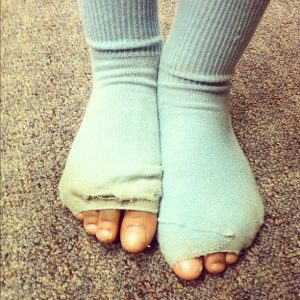That is the Question!
Introduction
Have you ever found an egg in your refrigerator and wondered if it was cooked? Although eggs drastically change inside their shells when cooked, it is still remarkably difficult to distinguish a cooked egg from a raw one without cracking it open. In this activity, you will find out how physics can help you tell the difference!
Materials
- At least six chicken eggs similar in size and color
- Sauce pan
- Stove (Use caution and ask an adult to help you use the stove and handle hot items in this activity.)
- Water
- Timer
- Slotted spoon
- Pencil
- Two small plates
- Sheet of paper
Prep Work
- Place three eggs in the saucepan. Add enough water so there is half an inch covering the eggs. Put the saucepan on the stove.
- Heat the water until it comes to a rapid boil and keep it boiling for seven minutes.
How do you think the eggs are changing during this time?
- Turn off the heat.
- Use the slotted spoon to take one egg at a time out of the hot water, rinse it under running cold water (optional), and store it in a safe place where it can cool completely.
- Use a pencil to make a small mark on the three raw eggs. Keep the mark subtle, as this will make it easier to test your ideas in an unbiased way.
- Store the raw eggs together with the cooked ones. This ensures that all eggs are at the same temperature when you start experimenting.
Procedure
- Choose a raw egg and crack it open on a plate.
How does the content of the raw egg look?
- Repeat the first step with a cooked egg.
How does the content of a cooked egg differ from that of a raw egg?
The goal of this activity is to find a test that can identify whether an egg is cooked or raw without cracking the shell.
What are your ideas?
- Choose one cooked and one raw egg from the four uncracked eggs that are left. Put the other pair of eggs aside for now.
- If you find a difference, note it on your sheet of paper. Remember there is a mark on the raw egg. This will help you identify which type shows a particular characteristic.
- Look at the eggs, smell them, and weigh them in your hands.
Does one look different, smell different, or seem heavier than the other?
- Gently tap your pencil against the cooked and raw egg and listen.
Can you hear a difference?
- Shake the eggs one at a time close to your ear.
Can you hear which one is raw?
- Put one egg on its tip and spin it. Lay it flat and spin it. Try it a few times before switching to the other egg.
Does one spin more easily than the other?
- Perform any other test or look for any other distinguishing characteristics you can think of.
- Review your notes.
Did you find differences? If so, do you think this difference appears because one of the eggs is cooked and the other is not? Why or why not?
- If you found one or several differences between the raw and cooked egg, test if these differences also appear in your last pair of eggs. Try not to look at the little mark on the raw egg while doing the test.
Does this difference distinguish the raw from the cooked egg in this pair, too? If you found a difference that held up for both pairs, do you think it can differentiate all cooked eggs from raw eggs? Why do you think the differences occur?
What Happened?
Did you notice that the inside of a raw egg is liquid, while the inside of a cooked egg is solid? It was probably impossible to tell the difference without cracking the shell until you tried to spin the egg. Even though it is difficult to spin a cooked egg, spinning a raw egg was probably much harder. This is expected.
When you boil an egg, the inside becomes solid. It does not change how the egg looks or its odor, so you cannot see or smell the difference. Shaking a raw egg does not make a sloshing sound because the liquid in the egg is contained in a membrane and only a small air bubble is present. Neither egg is hollow, so tapping it does not produce a clear audible difference.
You can tell the difference between a cooked and a raw egg by spinning it: a cooked egg is easier to spin. As the inside of a cooked egg is solid, the particles inside cannot move around relative to each other or the shell. The whole egg moves in unison. When you spin the cooked egg by twisting its shell, the hole inside moves along with the shell. In a raw egg, the inside is still liquid. The particles that make up the liquid can slide and move around relative to each other and the shell. When you spin the shell of the raw egg, the liquid inside does not start spinning right away—it needs some time to ”catch up,” and friction between the shell and the liquid slows down the spinning motion. Since it is easier to balance an egg on its tip by spinning it faster, this also makes cooked eggs easier to balance than raw eggs. It also helps that the inside of the cooked egg is less wobbly since it does not move around (its center of mass is fixed).



 Then you can start compare different things. You can start by letting the children feel each hand and guess which one is heavier. First perhaps with things that have a little more difference, a raisin and an apple then you can try things closer together.
Then you can start compare different things. You can start by letting the children feel each hand and guess which one is heavier. First perhaps with things that have a little more difference, a raisin and an apple then you can try things closer together. What to do
What to do